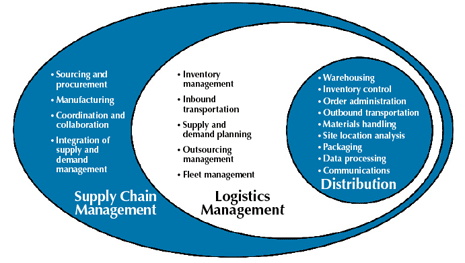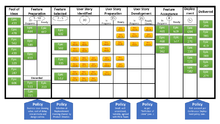An Army is said to march on its stomach.
In today’s world, it marches on its AI.
Ai has Changed “How” Logistics is Performed.
The modern goal of all business enterprises is a Seamless Single Logistics System. Precision Logistics relies on modern information systems and the networks that connect them. The demands of fast-paced information age warfare, combined with the realities of an emerging, global, information-based economy, make it essential that the seamless logistics system achieve unprecedented levels of interconnectivity and interoperability.
AI’s Simple Goals
Thanks to companies like FedEx and Amazon modern logistics looks more like Software creation via an Agile model than anything else twenty years ago would have recognized. 
Simple Goals which AI can help with:
- Transform the current logistics system into a distribution-based logistics system.
- Maintain an agile infrastructure.
- Fully field Total Asset Visibility (TAV).
- Achieve a rapid projection capability.
- Maintaining an adequate logistic footprint with minimum costs.
Okay, I know this sounds complicated and it is. May be this will help: Distribution-based logistics represents a whole new way of doing business. Velocity offsets mass, as echelons of inventory are replaced by managed flows of material. The key is timely and accurate information on the inventory that is in motion.
In other words, it is the old rabbit and the hare. Would you rather have large warehouses with slow turn-over with slow trucks or inventory that is always following not stagnant and 24 hours away from your end point?
All along the distribution-based supply chain, there will be small temporary inventories of fast-moving
supply lines and in-transit material. But the size of those inventories will be determined by the mission, not
mandated by historical demand, and their locations will reflect operational realities, priorities, and available transport.
. Faster and more plentiful transport will allow fewer and smaller in-transit holding inventories.
Distribution-based logistics creates an environment where the inventory quantity, as well as demands, are extremely dynamic. The AI needs to be able to anticipate demand, judge the arrival of assets, and direct appropriate adjustments to the supply system in real time. Adaptive Push vs Pull techniques will allow for a margin of error.
So life is not as simple as it used to be. Everyone wants it tomorrow, and it is still in a warehouse across the country. the only solution is to have mind-reading computer software or at least that perception. Adapt and predict the future of AI…
Kanban is a method for visualizing the flow of work, in order to balance demand with available capacity and spot  bottlenecks. Work items are visualized to give participants a view of progress and process, from start to finish. Team members pull work as capacity permits, rather than work being pushed into the process when requested. At QuantumAI our goal is to provide you the AI tools to Predict and Adapt.
bottlenecks. Work items are visualized to give participants a view of progress and process, from start to finish. Team members pull work as capacity permits, rather than work being pushed into the process when requested. At QuantumAI our goal is to provide you the AI tools to Predict and Adapt.
Stay tuned for more posts about Logistics in the modern world.
